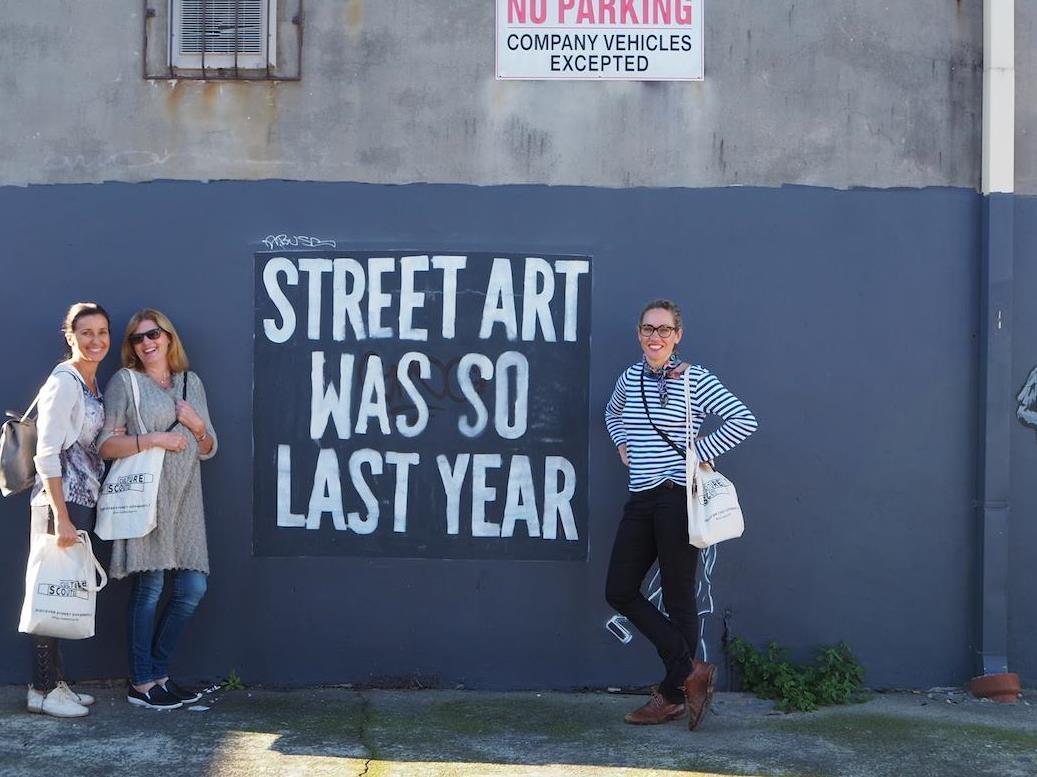As I walk through the suburbs of Sydney, leading street art walking tours, I often reflect on how the value of street art has changed from its baby psychedelic steps in the Sixties and the F-Thatcher/Reagan Eighties, to the prized public aesthetic of today.
Street art as a movement was wholly a response to the socio-politics of its time. It was art as activism, social commentary, and freedom of speech. Illegally painted and plastered on bare city walls, it became synonymous with, and later symbolic of, degenerate and poorer areas of the city.
Over the last 10 to 15 years, as urban areas have sprawled, the gentrification of dilapidated suburbs has seen street art become valued for different reasons. Historical, aesthetic, community and cultural value, just to name a few.
Of course, when it comes to art, monetary value is hard to ignore. It’s difficult to put a price on ephemeral art, but this hasn’t allowed artworks by famed street artist Banksy from escaping the dollar value of the art market.
There have been cases of the dismantling of walls where his work has been painted so that the work can be sold at auction. People have also fixed perspex to walls, to protect the work of street art. This suggests a rejection of the historic, and slightly romantic notion of street art: that the work is visible only as long as the elements allow.
Needless to say, the linking of street art and graffiti to poverty to ensure its removal, has dramatically changed.
Local councils now realise the value that street art can add to communities, and create cultural policies to implement the commission of and protection of street art.
These policies include a Street Art Register, which serves to catalogue and monitor works of art in the community – attempting to stop the illegal removal of sanctioned works of art.
There is also the inclusion of local walking tours (if you’re in Sydney, check out the Inner West Open Studio Trail), which serve to engage and educate the public on street art.
What better way to communicate the issues of today than to have them in your face on the daily commute? Who wouldn’t want to be living in a city surrounded by beautiful colours and intriguing street art; works that may stop and make you think about the heritage of the land you are walking on?
While emerging street artists such as Bafcat, Silly Pear, Akisiew, Aquaman,Jumbo and Skulk have been able to capitalise on this newfound popularity and acceptance of street art, there are plenty of unknown artists out there.
Creating works gives them the chance to have their work seen by thousands of people on a daily basis – giving them exposure unavailable in a traditional gallery.
So eyes off your iPhone and out the window! Who knows – you may spot the next Banksy.





